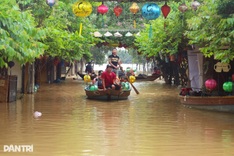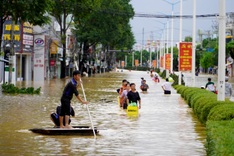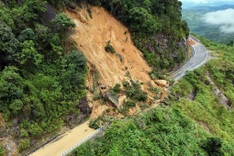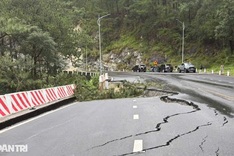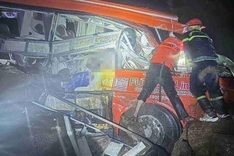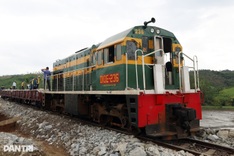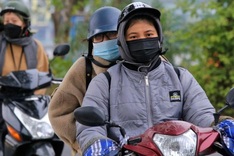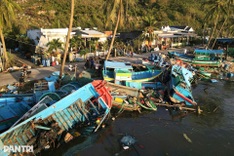Dangerously crossing rivers in Vietnam’s mountainous Central Highlands has become a way of life for locals.

Crossing the river is extremely dangerous for children.
Locals in these areas have developed numerous creative, albeit risky, ways to cross the rivers. Rafts made out of bamboo or banana tree trunks are a common sight and gradually, those hand-made rafts have become an indispensable means of transport for the people here.
From the Ho Chi Minh Trail, the section that passes through Tay Giang District, Quang Nam, the sight of local people, crossing the Avuong River, would shock many visitors. Amid the river, made cloudy by recent floodwater, young children guide rafts across the river.
For adults, their fields are often situated far away from their homes, meaning river crossing is inevitable. In order to till their fields or collect firewood, people often have no choice but to cross the quick-flowing rivers, despite frequent accidents.
Arat Pol, a local from Xa Oi 2 Hamlet, Avuong Commune, Tay Giang District, said, “In my hamlet, all of our fields are on the other side of the river. There’s no bridge across this part of the river. If we don’t go tilling our fields, we will have nothing to eat. So even though it’s dangerous, we still have to go. People living in Xa Oi 1 and Xa Oi 3 Hamlets, and in other areas of the district, also have to cross the river using a raft.”
The danger is even greater for children who often go to collect bamboo shoots and firewood for their family. They have to cross the river the same way adults do. Alang Hieu, 6 years old, shared with a smile, “I always follow my brother and sister when they cross the river. Once, we fell from the raft and were drifting away but we swam, got on shore and walked back up. I know how to swim. I’m not scared.”
Travelling across the river by a raft seems to pose a great risk, but with people living in Aduon 2 Hamlet, P’rao Town, Dong Giang District, anyone who has a raft is considered to be lucky. No road leading to Aduon has been constructed and the only way to get there is to swim across the river. At the river bank, we were able to spot a group of 4 Cotu women trying to get to the other side of the river. According to one woman, she is from one side of the river, but her husband from the other side, so she has to swim back and forth often.
As soon as people get to the river bank, they immediately look for a place to bury their footwear. They do this so that so their footwear will not be stolen. People wrap important things together in one package and try to swim using one hand, while the other holds the package high above the water to prevent it from getting wet. After getting to the other side, still soaking-wet, they would still need to walk many kilometres before they could reach their home.
There are numerous places along Truong Son mountain range where local people are forced to cross the river in such dangerous ways.
In Kon Tum Province, for months, many people have had to wade through Tra Mom Stream as their bridge was destroyed during a big flood at the end of last year.
With flood season coming, the risks are even greater. The water in these rivers can rise swiftly and in the blink of an eye there can be flash-floods.

Crossing the river by a hand-made raft.

Swimming across the river to get to Aduon.

If the water is low enough, people wade instead of swimming.
Pictures of locals trying to cross Tra Mom Stream:






